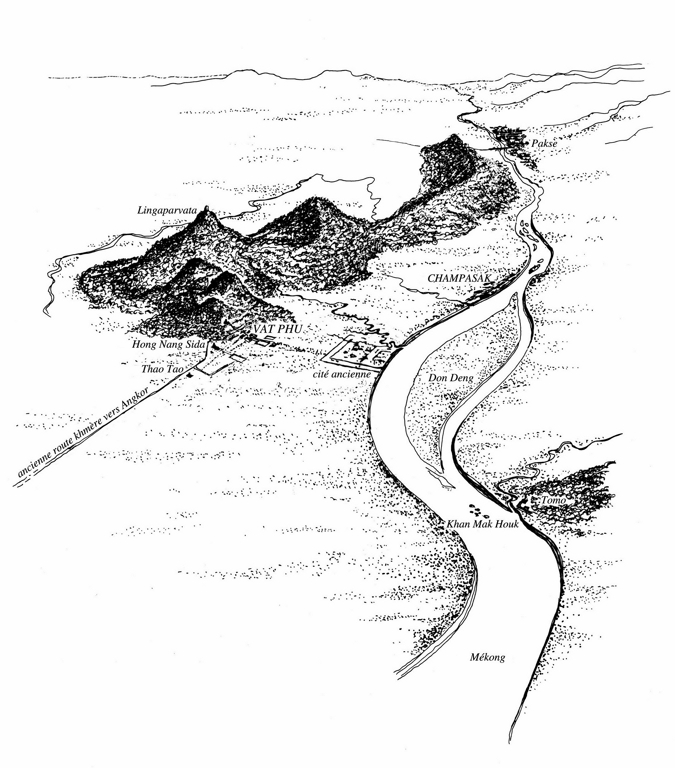Vat Phou - Presentation
Inscriptions from to the 5th and 6th centuries mention a sanctuary built on the mountain, during the same period as the foundation of the city. This sanctuary has disappeared and has been replaced by the religious complex we see today. This complex was built during the first part of the 11th century, with some additions and reconstructions from the 12th and 13th centuries.
Built along an East-West axis, it extends over 1.4 km and climbs up the slope, starting from the plain and ending about 100m above, where the main sanctuary is situated. The main sanctuary is located on a terrace at the foot of the cliff where the sacred spring flows.
The religious complex of Vat Phou is of Khmer architecture and Hindu religion and is situated at the foot of a hill. The summit, the Phou Kao, immediately commands one's attention because of its shape, identified in ancient times with the linga, the phallic symbol of Shiva, from which originated its ancient name, Lingaparvata, and its reputation as a sacred hill.
The permanent spring, at the foot of the cliffs, is probably one of the main reasons that induced the ancient rulers of the area to establish a shivaist sanctuary at this location. Associated with this religious complex, in the plain below, on the banks of the Mekong, is a pre-angkorian city, the remains of which (large earthen enclosure walls, brick monuments) are barely visible on the ground, although they appear quite clearly on aerial pictures.
Since 1991, excavations have been undertaken by P.R.A.L. (Projet de Recherches en Archéologie Lao) with the aim of producing a precise archaeological map.





















